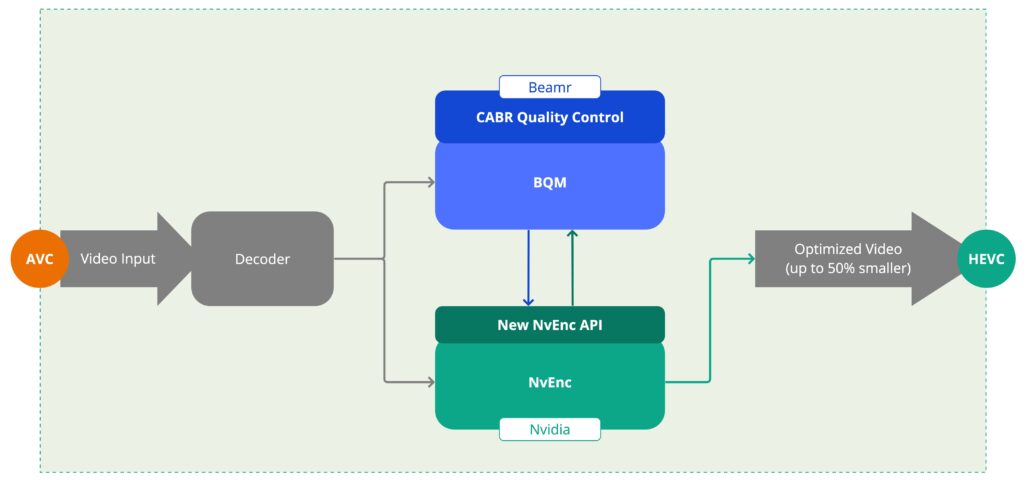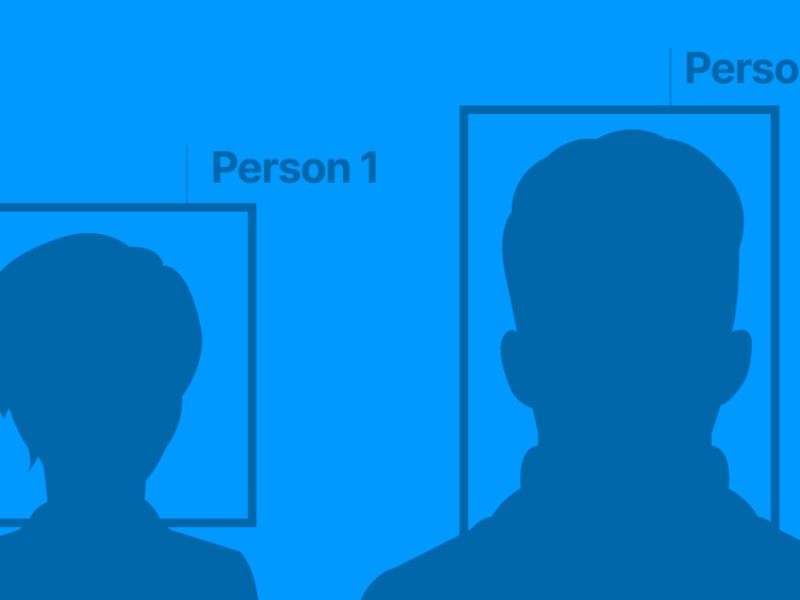Easy & Safe Codec Modernization with Beamr using Nvidia GPUs
Following a decade where AVC/H.264 was the clear ruler of the video encoding world, the last years have seen many video coding options battling to conquer the video arena. For some insights on the race between modern coding standards you can check out our corresponding blog post.
Today we want to share how easy it can be to upgrade your content to a new and improved codec in a fast, fully automatic process which guarantees the visual quality of the content will not be harmed. This makes the switchover to newer encoders a smooth, easy and low cost process which can help accelerate the adoption of new standards such as HEVC and AV1. When this transformation is done using a combination of Beamr’s technology with the Nvidia NVENC encoder, using their recently released APIs, it becomes a particularly cutting-edge solution, enjoying the benefits of the leading solution in hardware AV1 encoding.
The benefit of switching to more modern codecs lies of course in the higher compression efficiency that they offer. While the extent of improvement is very dependent on the actual content, bitrates and encoders used, HEVC is considered to offer gains of 30%-50% over AVC, meaning that for the same quality you can spend up to 50% fewer bits. For AV1 this increase is generally a bit higher.. As more and more on-device support is added for these newer codecs, the advantage of utilizing them to reduce both storage and bandwidth is clear.
Generally speaking, performing such codec modernization involves some non-trivial steps.
First, you need to get access to the modern encoder you want to use, and know enough about it in order to configure the encoder correctly for your needs. Then you can proceed to encoding using one of the following approaches.
The first approach is to perform bit-rate driven encoding. One possibility is to use conservative bitrates, in which case the potential reduction in size will not be achieved. Another possibility is to set target bitrates that reflect the expected savings, in which case there is a risk of losing quality. For example, In an experimental test of files which were converted from their AVC source to HEVC, we found that on average, a bitrate reduction of 50% could be obtained when using the Beamr CABR codec modernization approach. However, when the same files were all brute-force encoded to HEVC at 50% reduced bitrate, using the same encoder and configuration, the quality took a hit for some of the files.



This example shows the full AVC source frame on top, with the transcodes to HEVC below it. Note the distortion in the blind HEVC encode, shown on the left, compared to the true-to-source video transformed with CABR on the right.
The second approach is to perform the transcode using a quality driven encode, for instance using the constant QP (Quantization Parameter) or CRF (Constant Rate Factor) encoding modes with conservative values, which will in all likelihood preserve the quality. However, in this case you are likely to unnecessarily “blow up” some of your files to much higher bitrates. For example, for the UGC content shown below, transcoding to HEVC using a software encoder and CRF set to 21 almost doubled the file size.

Yet another approach is to use a trial and error encode process for each file or even each scene, manually verifying that a good target encoding setup was selected which minimizes the bitrate while preserving the quality. This is of course an expensive and cumbersome process, and entirely unscalable.
By using Beamr CABR this is all done for you under the hood, in a fully automatic process, which makes optimized choices for each and every frame in your video, selecting the lowest bitrate that will still perfectly preserve the source visual quality. When performed using the Nvidia NVENC SDK with interfaces to Beamr’s CABR technology, this transformation is significantly accelerated and becomes even more cost effective.

The codec modernization flow is demonstrated for AVC to HEVC conversion in the above high-level block diagram. As shown here, the CABR controller interacts with NVENC, Nvidia’s hardware video encoder, using the new APIs Nvidia has created for this purpose. At the heart of the CABR controller lies Beamr’s Quality Measure, BQM, a unique, patented, Emmy award winning perceptual video quality measure. BQM has now been adapted and ported to the Nvidia GPU platform, resulting in significant acceleration of the optimization process .
The Beamr optimization technology can be used not only for codec modernization, but also to reduce bitrate of an input video, or of a target encode, while guaranteeing the perceptual quality is preserved, thus creating encodes with the same perceptual quality at lower bitrates or file sizes. In any and every usage of the Beamr CABR solution, size or bitrate are reduced as much as possible while each frame of the optimized encode is guaranteed to be perceptually identical to the reference. The codec modernization use case is particularly exciting as it puts the ability to migrate to more efficient and sophisticated codecs, previously used primarily by video experts, into the hands of any user with video content.
For more information please contact us at info@beamr.com


